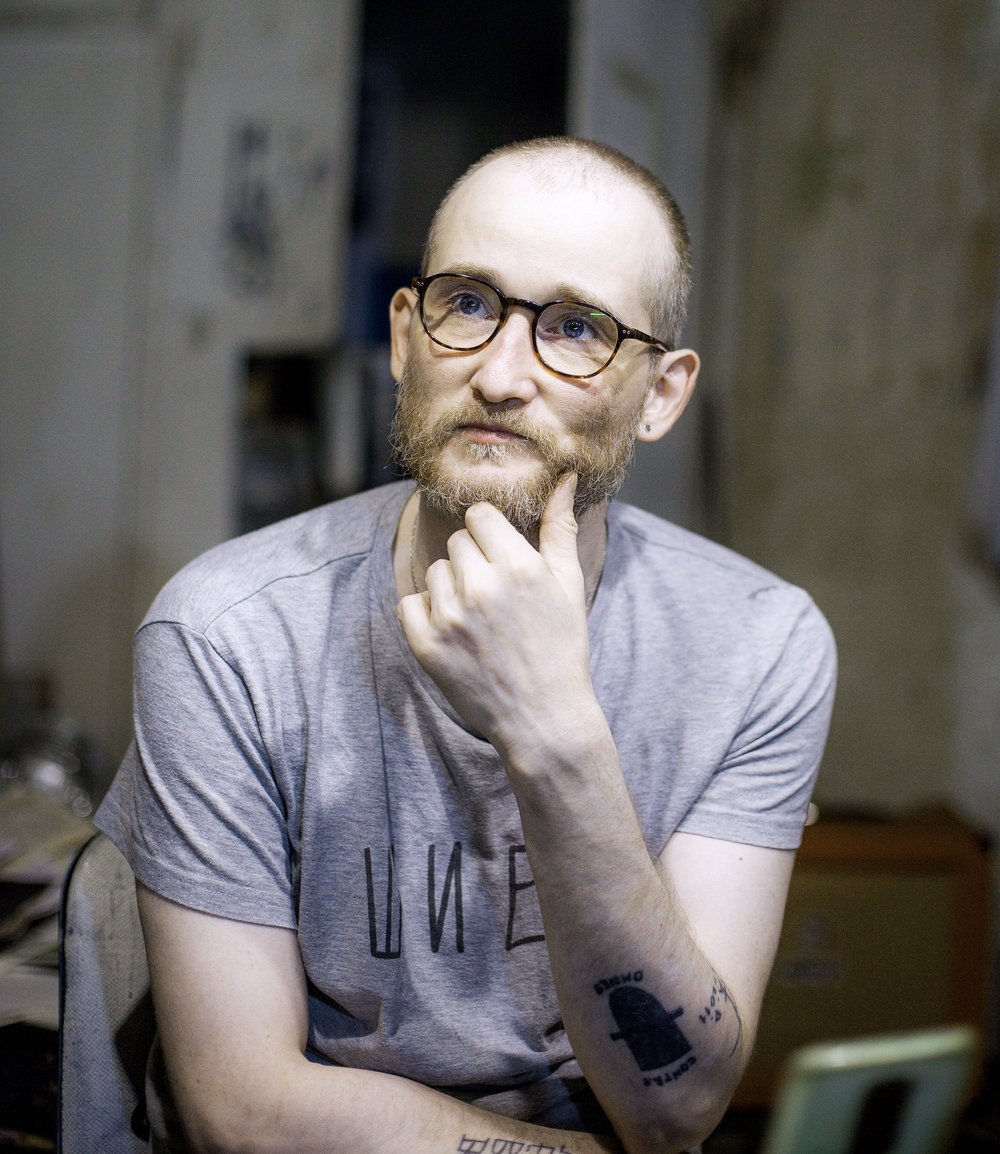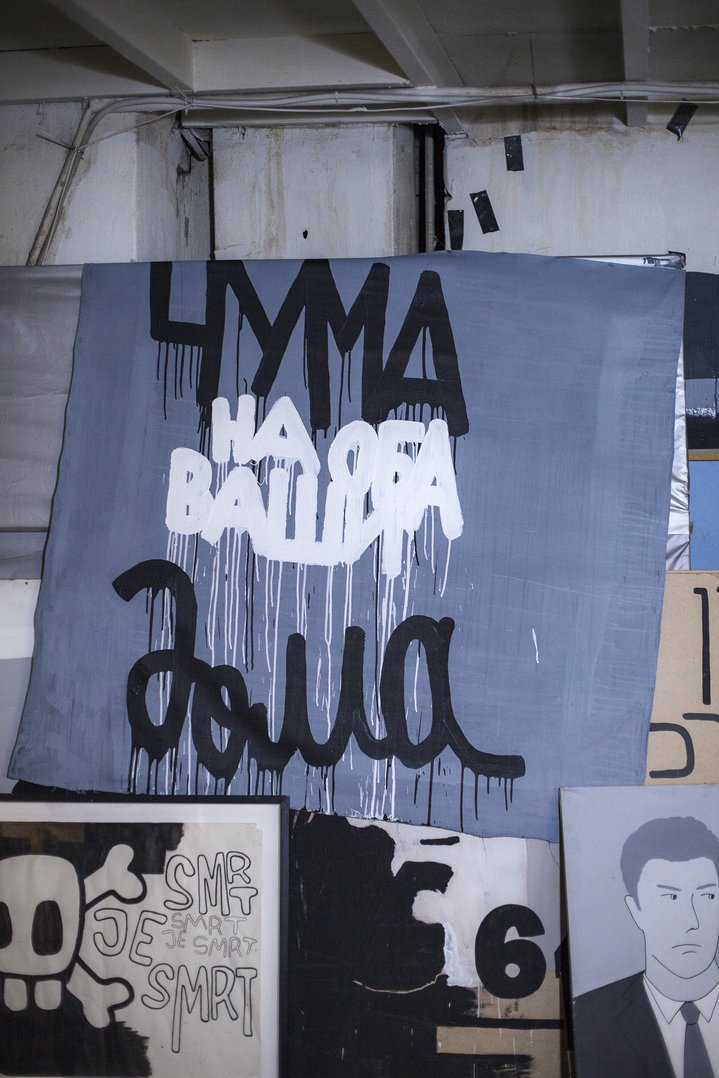Artist Valery Chtak Dies Aged 42

Valery Chtak. Photo by Lena Avdeeva. Courtesy of Lena Avdeeva
Conceptualist or Dadaist, Valery Chtak who coined the phrase ‘I don’t know. I’m from Moscow’, was an unconventional thinker, artist and musician, whose idiosyncratic art could never be put in a box. Art critic Alisa Dudakova-Kashura tries to pin down the essence of a man who defied the critics till the end.
Russian artist Valery Chtak (1981–2024) has passed away in Moscow, at the age of 42 after battling a serious illness. Over the past decade Chtak rose to become one of the most recognizable and popular artists of his generation. There are the impressive collections his work is held in, such as the Tretyakov Gallery, the Moscow Museum of Modern Art, and Deutsche Bank, and the titles showered on him, which Chtak himself treated rather ironically – in 2022 he became Cosmoscow’s Artist of the Year – or the special attention paid to him by top curators like Hans Ulrich Obrist, who went to his studio a few years ago during a visit to Moscow. But much more than this is the great affection and love people felt for Chtak and what he stood for in the Moscow art community.
His art was not always seen in the way that he wanted, Chtak’s eyes would roll when people insisted on referring to him as a street artist. He even made a painting with the words ‘There is no such thing as street art on canvases’. But it is true that his artistic path began on the street, in 1998, as a member of Avdey Ter-Oganyan’s (b. 1961) School of Contemporary Art, he joined the action ‘Barricade on Bolshaya Nikitskaya’, where they adopted slogans from the 1968 student revolution in Paris such as ‘It is forbidden to forbid!’ and ‘Be realistic – demand the impossible!’.
Later, Chtak realized that these kind of demonstrations were not for him. And he started drawing, even though he did not know how to and through his acquaintance with key figures of the Moscow art scene of the 1990s, he learnt that “an artist is not someone who can draw, but someone who can reason”. What became then his personal trademark were paradoxical and confusing phrases taken out of their original context: "Not less than you, and not today", “In my case – by no means” and, of course, the classic “I don't know, I’m from Moscow”, which has since become a popular aphorism.
In general, Chtak was a kind of philosopher, if an unconventional one. If you talked with Chtak for only ten minutes, you would be struck by the originality of his thinking. Jacques Derrida, Jean Baudrillard and Gilles Deleuze were all important names for the artist. In his early experiments in drawing and painting back in the early 2000s he created a whole gallery of portraits of poststructuralist philosophers. When I interviewed him in 2022, in his studio in Moscow’s Fabrika Centre for Creative Industries there were five small canvases dedicated to Deleuze. There was also a drum kit and a guitar leaning against the wall, because Chtak was also a musician: together with Evgeny Kukoverov (b. 1984) from EliKuka artist duo and composer Dmitry Vlasik (b. 1981), they formed a trio with the unpronounceable name Sthow's Seths, invented by Chtak who played the guitar. He had a tattoo of a man in a hat on his arm, the Mr Sthow from the band's name.
Sometimes Mr Sthow also appeared in Chtak’s paintings, along with skulls, cats, birds. Although it is hard to find any universal words to describe his paintings, it is impossible to confuse them with anything else. “All grey, some letters... Unclear, but funny” this is how he described them once. In recent months when it had become difficult for him to work in an interview he gave to two friends, Pyotr Bystrov (b. 1980) from art group Radek, and Ekaterina Kartseva, founder of the Internet portal Art and You, he revealed that he could not even draw a straight line anymore. He lost interest in showing his work in solo exhibitions. But he shared his dream with them: to make a computer game for Nintendo Switch, in which each new level would be unpredictable.
Talking to Chtak a few years ago, I asked him to reflect on art in general, as I looked for a good way to finish our interview. “It’s better on Earth with this painting, than without this painting – that’s the only principle by which we do art,” he concluded. One thing can be said: it is good that Valery Chtak was here with us. And that he left his paintings on Earth.
This article was first published in Russian on the website of The Art Newspaper Russia on 24 May, 2024.












